Blogs

Can Legacy Brands Thrive in a Phygital Future?
Vikram Limsay emphasizes that while the term #Phygital may be trendy, merging physical and digital models isn't straightforward—they require separate, focused strategies. He warns that legacy brands must constantly evolve or risk becoming irrelevant. He critiques surface-level digital strategies as often being costly and ineffective. According to him, every layer of the digital sales funnel needs a unique strategic approach. While a product may not always scale geographically, the underlying concept can. He urges brands to build relevance beyond diaspora audiences, explore brand extensions, and prepare for the imminent wave of AI agents. His insights were shared during a thought-provoking session hosted by Ritu Marya alongside iconic names from Indian retail.
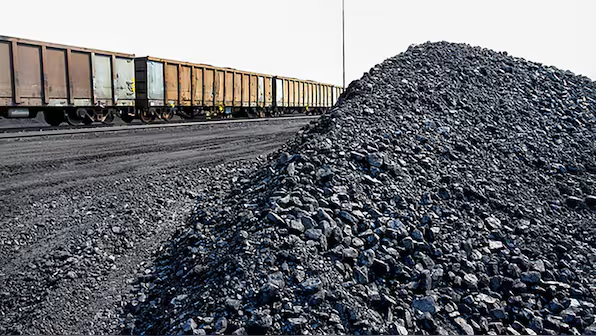
Can India’s Energy Future Rely on the Black Diamond?
Vikram Limsay highlights the pivotal role of Coal India Limited (CIL) in ensuring India's energy security. With a market cap of ₹3 trillion and annual revenues of ₹1.5 trillion, CIL is not only a Maharatna PSU but also the second-largest employer in India after the Railways, employing over 2.25 lakh people. It extracts nearly a billion metric tonnes of coal annually, powering over 60% of India's peak energy demand. With the world's largest identified coal reserves, India is well-positioned for a century of energy sufficiency. Limsay lauds the scale, skill, and impact of public sector enterprises, noting the incredible operations led by CMD Shri P.M. Prasad and Director HR Dr. Vinay Ranjan. Every time we power our devices, it’s a miner’s labor that fuels it.
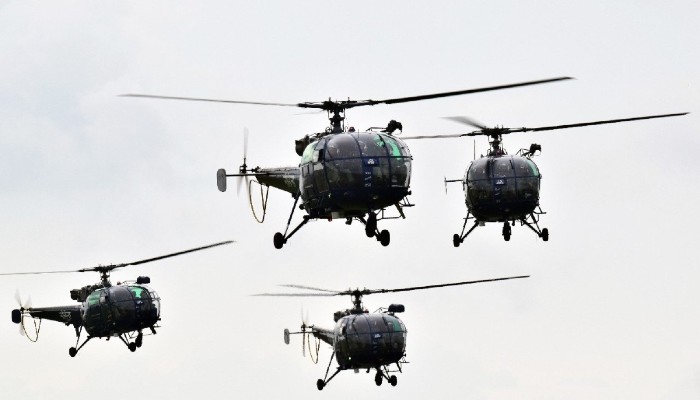
Will India’s Defence Boom Spark a Manufacturing Revolution?
Vikram Limsay draws attention to a powerful economic trend: the defence sector's pivotal role in catalyzing manufacturing growth. Historically, major manufacturing economies—France, Germany, the UK, Japan, and even the U.S.—have seen their industrial might rooted in defence-driven innovation. India, primarily a maritime state with limited historical conflict, is now witnessing a major shift. With defence production doubling to ₹1.27 lakh crore and exports rising twelvefold to ₹24,000 crore, the sector is becoming a strategic engine for industrial growth. As global volatility increases and India leans into tariff-based trade dynamics, this trend could drive lasting impact on stocks, careers, and the broader economy.
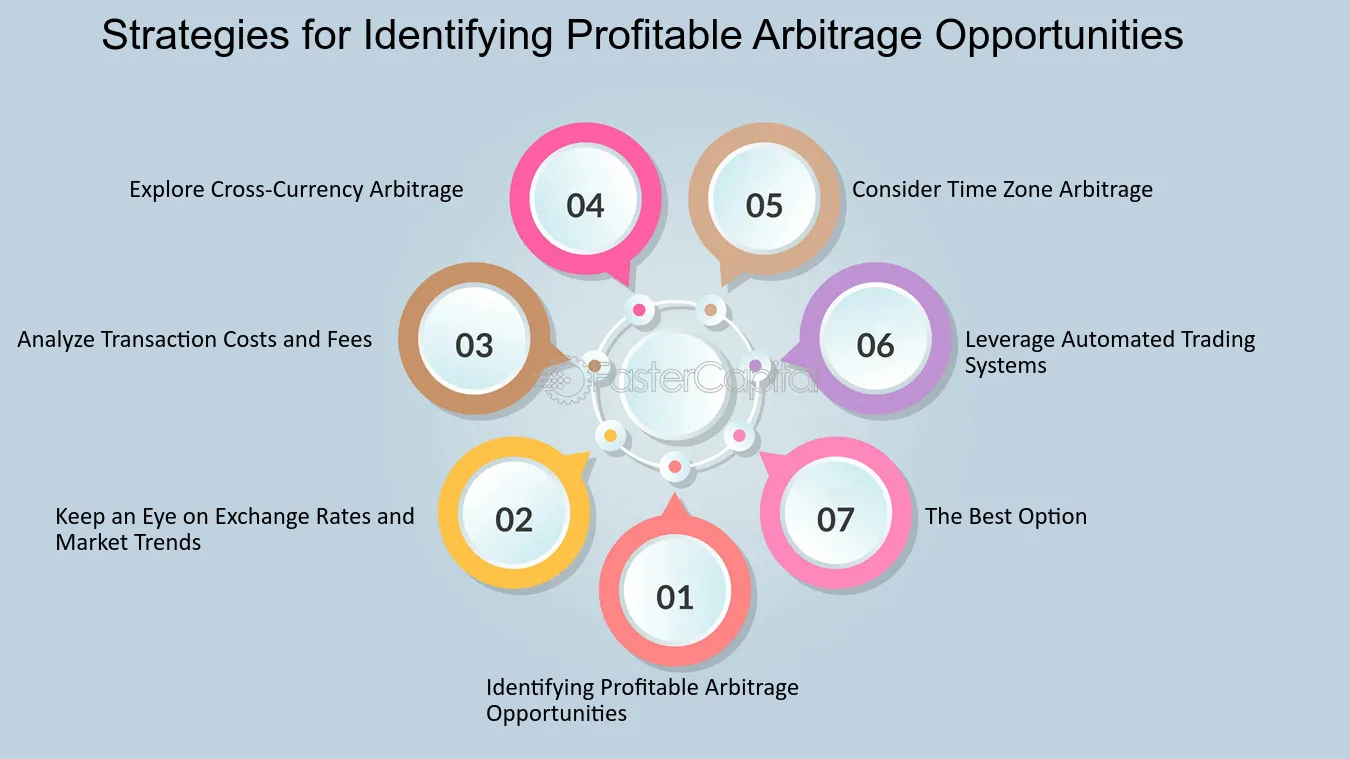
Is the Era of Arbitrage Profits for Global Brands Ending?
Vikram Limsay warns of a brewing storm for global luxury brands as Chinese OEMs begin exposing the real manufacturing costs behind premium labels. With the secrecy clause lifted by the Chinese government, videos revealing the stark pricing gaps between production and retail are going viral. This shift threatens the royalty and IP-driven revenue model of many Western companies and challenges the price elasticity that brands can sustain. As consumer skepticism grows, the long-standing model of currency arbitrage and inflated brand premiums may no longer hold. The shelves might soon be filled with new, transparent, and competitive brands.
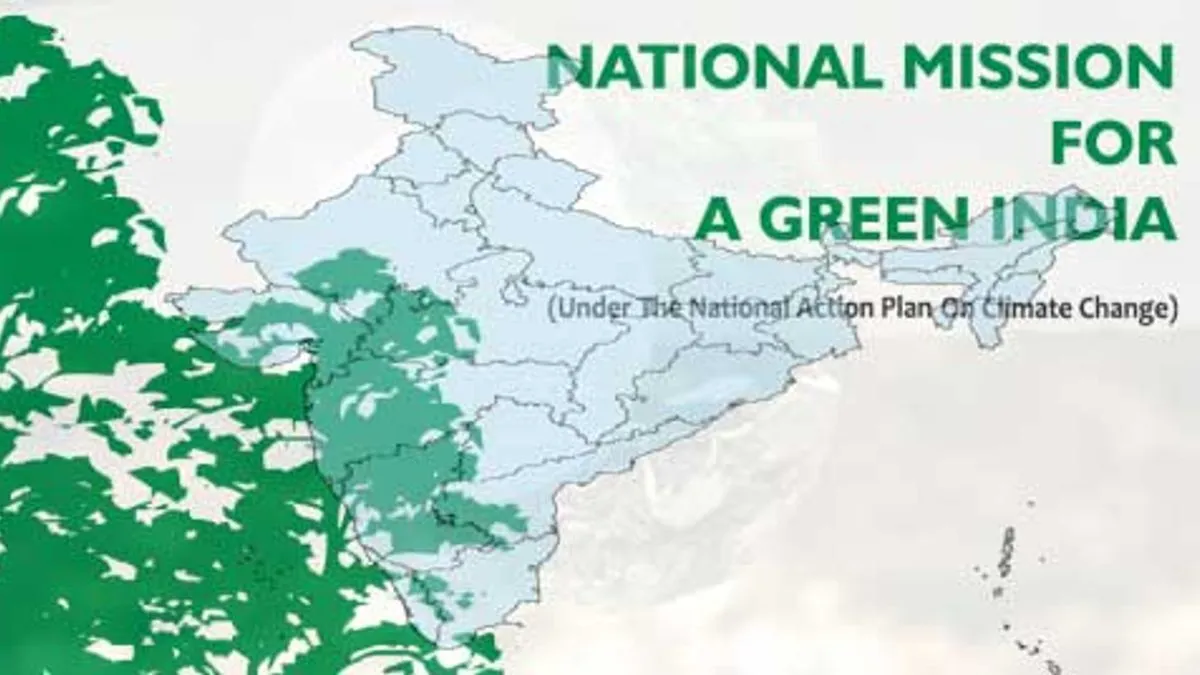
Can One Man’s Green Mission Inspire a Nation?
Vikram Limsay reflects on the extraordinary life of Daripalli Ramaiah, fondly known as “Vanajeevi” or the Tree Man of India, who passed away at 87. With over 10 million trees planted, Ramaiah’s legacy wasn’t built on wealth or fame, but on seeds of hope scattered across Telangana’s barren lands. Despite ridicule and limited means, he sold his land to fund his afforestation mission and lived by the belief that Nature is God. Honored with the Padma Shri in 2017, his story is a powerful reminder that a single life lived with conviction can alter a landscape—and a mindset. Ramaiah didn’t just plant trees; he cultivated a legacy of sustainability.
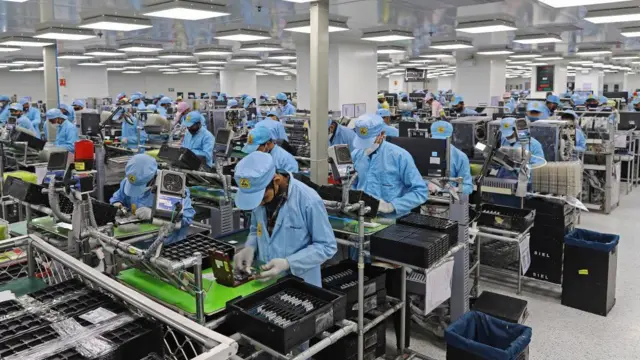
Will Indian Manufacturing Seize the Tariff-Driven Opportunity?
Vikram Limsay analyzes a revealing Bloomberg graphic showing that despite its tough stance, the U.S. has spared nearly a fourth of Chinese imports—especially electronics—from its tariff wave. He critiques the West's long dependence on cheap global goods funded by a strong USD, which came at the cost of domestic manufacturing strength. Now, reversing that model would mean currency devaluation and inflation, a tough geopolitical trade-off. Meanwhile, India has a rare window to step up—but with the underwhelming response to the PLI scheme, doubts remain. Limsay questions: Will Indian entrepreneurs rise to the challenge—or miss the moment?
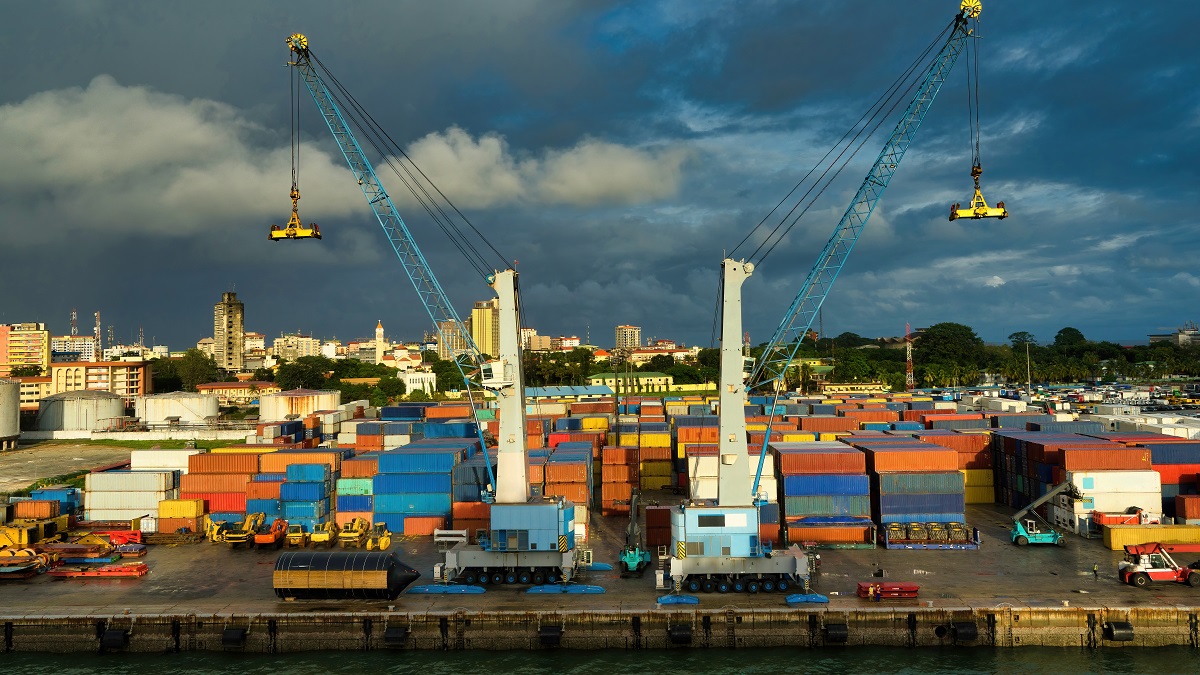
Is the World Ready to Face the Real Cost of Global Trade?
Vikram Limsay unpacks the deeper dynamics of global trade inequity, stating that "Inflation" is the top U.S. export and "Capacity" is China’s. Tariffs alone can't rebalance this system. He critiques Trump’s push to revive Detroit’s old ICE-era auto industry, pointing out that the EV transition demands a new ecosystem, not just protective tariffs. Limsay raises a sharp question—can tariffs be applied to America’s biggest services import: international travel? Unlikely, given the average American’s taste for affordability. For India, he suggests a strategic pause—ignore the noise, spot the real opportunity, and wait for the right pitch to go big—like a Sachin Tendulkar masterstroke.
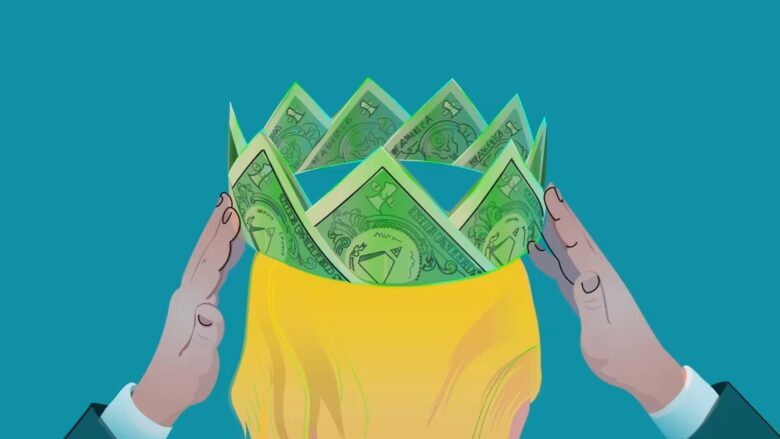
Are Tariffs Just a Smokescreen for Dollar Dominance?
Vikram Limsay, in his piece for The Indian Express, challenges the narrative around Trump’s upcoming “Tariff Tsunami”, arguing that the real distortion in global trade isn’t tariffs—it’s the unchecked power of the U.S. Dollar. For decades, America has benefited from a currency hegemony that rigs the global trading field in its favor, making the idea of "free and fair trade" with the U.S. largely a myth. He contends that tariffs imposed by others aren’t hostile—they’re a defense mechanism. Moreover, this same dollar advantage has hollowed out U.S. manufacturing, so retaliatory tariffs may not revive it. The real fix? Exchange rate correction—but does the U.S. have the courage?
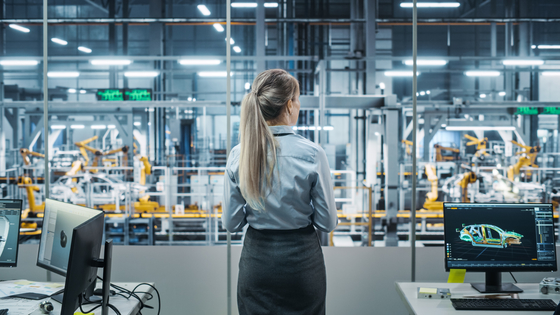
Can ICE Thinking Survive the EV Disruption?
Vikram Limsay warns that applying ICE-era thinking to the EV transition is an existential mistake—for both new-age EV manufacturers like Ola, Ather, and legacy giants like Tata Motors and Mahindra. Similarly, auto dealerships risk irrelevance if they cling to old models while the EV wave reshapes the landscape. At Helicon Consulting, this shift was anticipated early. In 2021, Vikram predicted that traditional automotive leaders would struggle to retain dominance—a forecast now validated by Tesla, BYD, Ola, and others. Helicon developed a tailored transition solution years ago and has since helped many players navigate this transformation successfully.

Can Iconic Companies Outlive Their Mavericks?
Vikram Limsay raises a critical question—can companies built on the genius of visionary founders sustain their edge once that vision fades? With Apple now relying more on legacy and less on innovation, its India entry seems more like a “swansong tour” than strategic expansion. This moment sparks reflection for entrepreneurs, investors, and policymakers alike: What truly ensures longevity—process over product, size, support, or succession? As maverick-led companies age, the risk of decline grows. It's a cautionary tale for those betting on legacy without reinvention.
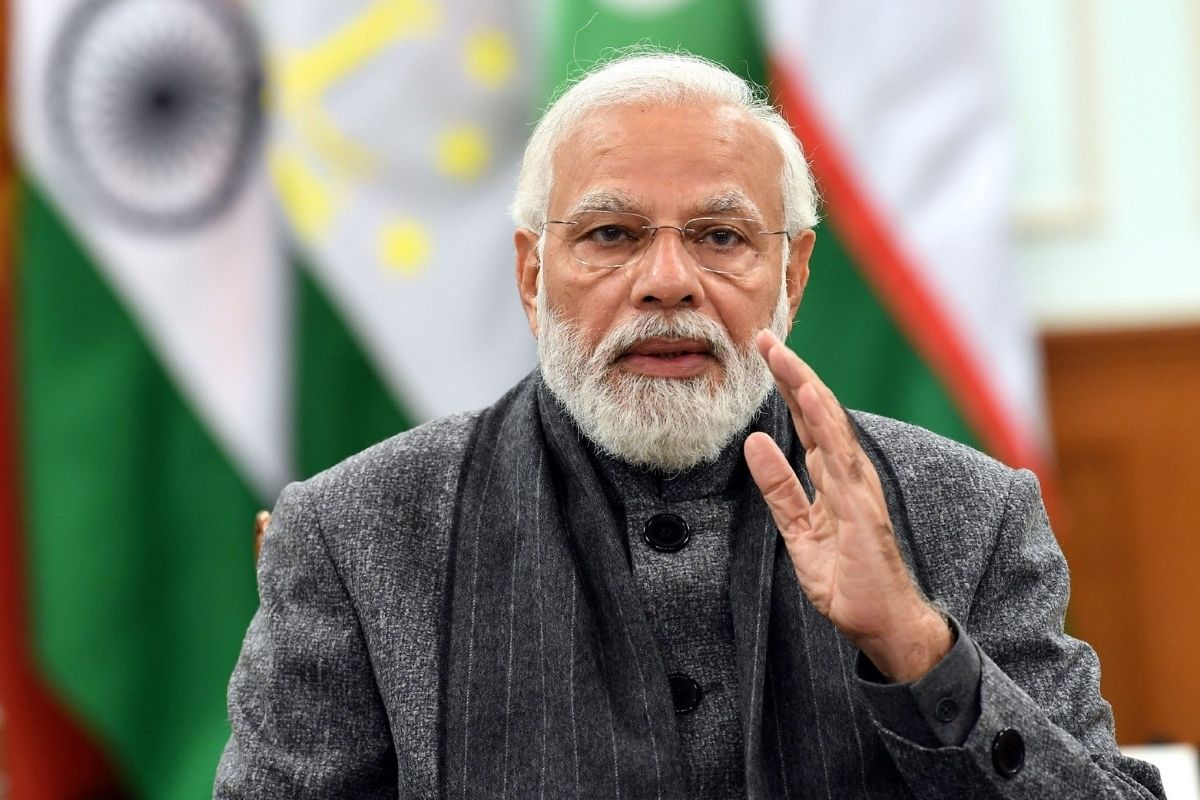
Is India Ready to Lead in a Realigned Global Order?
Vikram Limsay reflects on the geopolitical shake-up triggered by the Trump–Zelensky episode and how it might reshape global trade dynamics—with India poised at the center. As global alliances shift, India's historical ties with Russia, Japan, the Arab world, and growing influence in the Global South could become strategic levers. But with only USD 1.5T of global trade share, India must navigate this opportunity wisely. For Indian businesses, understanding Western politics and culture will be as important as leveraging domestic strengths beyond metros. The world must meet the real India, not the sanitized boardroom version.

Is Global Food Trade Feeding the Hungry or Feeding Profits?
At a WTO talk in Dubai, Vikram Limsay noticed a troubling paradox—global food trade has surged to $3.5 trillion, yet hunger levels remain unchanged since the early 2000s. If trade is meant to ensure food security, why does hunger persist? He questions whether global trade in staples benefits the needy or merely lines the pockets of food traders. Should cassava stay in Africa, rice in Asia, and wheat in Europe? Limsay argues that localization of staples and globalization of premium foods may be the real path forward—not just for profit, but for justice.

Politics Matters Because Policy Matters
Rules and policies are essential for maintaining order in society—whether it’s traffic, public behavior, or governance. Yet, many people claim they’re not interested in politics, often confusing the function of politics with the person of the politician. Policy-making is the backbone of societal function, impacting everything from wealth creation and inheritance to corporate strategy. Legendary entrepreneurs like Rockefeller and Dhirubhai understood its power. Political ideologies shape policies—be it capitalism, socialism, or theocracy. In a democracy, voting means expressing your interests, not just casting a ballot. So, don’t ignore politics—policy matters.
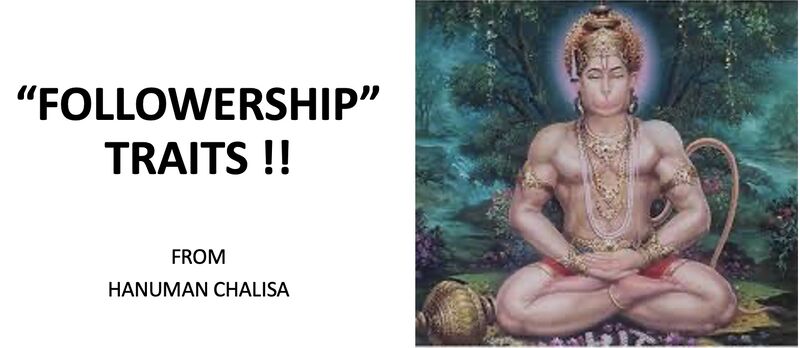
Followership Traits From Hanuman Chalisa
Every Hanuman Jayanti, Vikram Limsay reflects on the overlooked value of followership in a leadership-obsessed world. While leadership is heavily celebrated, followership rarely gets attention—even though every great leader was once a good follower. Drawing from the Hanuman Chalisa, he highlights traits like devotion, reliability, adaptability, discretion, and enthusiasm as ideal follower qualities. Lord Hanuman, the epitome of followership in Indian culture, exemplifies how these traits can build strong organizational support. Limsay encourages young professionals to embrace followership first—to eventually grow into impactful leaders.
1: #Phygital may be fashionable wordplay but mixed strategy is NOT. Physical & Digital business models are distinct.
2: Constant transition is an existential necessity for #legacybrands else legacy is diminishing returns.
3: Each layer in the #digitalsales funnel has a distinct focus strategy.
4: Most digital strategies are scraping at the surface. Can be expensive & delusional.
5: Product may not be geographically scalable but the concept can be.
6: Build relevance beyond #diaspora.
7: Explore extension possibilities.
8: There is a swarm of #AI #Agents coming. Learn to deal with it … Or Perish!
My views distilled as above during the discussion for a #technology-driven #Omnichannel #Retail future for #brands in a brilliantly curated show by Ritu Marya of IndianRetailer.com
It was my pleasure to be in the company of iconic #legacybrands & their equally iconic custodians, Lavanya Nalli #ArjunRanga Arvind Dadu, dinesh talera & exchange ideas & best practices in crafting a future.
#Nalli #CycleAgarbathi #AnandSweets #MysoreSareeUdyog like many others in the country are legacy brands now recognized globally & have a great possibility to build leverage both #financial & #brand.
Happy to do a #ChaiPeCharcha or #CatchUpOverCoffee on this future trend & its requirements & where the world is going.
The #BlackDiamond that is the backbone of Indias #EnergySecurity.
It was a sincere pleasure for us at Helicon Consulting to call upon CMD #CoalIndiaLimited Shri. #PMPrasad Ji & Director Personnel & HR Dr. Vinay Ranjan, PhD. Ji who oversee an operation at a scale that can boggle the mind !
A Rs.3 Trillion market cap #maharatna with Rs.1.5 Trillion annual revenue returning Rs.150 billion to the exchequer, #CIL is the second largest #employer in the country after #IndianRailways employing over 2.25 Lakh people. It excavates a billion MT of sub surface coal each year to fuel over 60% of the 250 GW peak energy demand of the country where each one us consumes 1400 KWH annually thats only going to rise. Thankfully we have the largest identified coal reserves in the world that will keep us going for over a century.
So remember as you switch on that computer in morning; there is some #Underground or #Opencast miner hard at work to power it.
Being a leading Indian Consulting firm we are proud & enthused whenever we engage with Indias #PublicSectorEnterprises … The #Skill & #Scale we experience is just next level ..
Lets do a #ChaiPeCharcha or #CatchUpOverCoffee to explore the exciting world of Indias public sector enterprises..
#CorporateStrategy #PublicPolicy #IndianEconomy #BusinessStrategy #FunctionalStrategy #PartneringYourStrategy
(Myself & PRADEEP PAL – Partner Helicon in the pic)
Perhaps the most interesting trend to watch out for which will have a larger positive, collateral & multiplier impact on the Indian economy over the next decade.
In our contemporary post hashtag#industrialrevolution world, hashtag#defense sector has almost always preceded development of the hashtag#manufacturing sector. History supports this connection. Most Europeans countries like hashtag#France, hashtag#Germany, hashtag#UK, hashtag#Czech republic developed their manufacturing sector on the back of the battles & wars that were fought on that continent. Most hashtag#globalengineeringbrands that we see today, like hashtag#Schneider, hashtag#Schindler, hashtag#Volakwagen etc owe their early fortunes to the Defence Sector. Same for other regions. hashtag#BayArea in the hashtag#US has its history inextricably linked to defense & war. Same for hashtag#Japan & hashtag#Russia & hashtag#China.
India has largely beena maritime modern state barring a few localized conflicts with Pakistan. Even then our hashtag#spaceprogram which traces its roots to our hashtag#missile and hashtag#rocketry program connected to national defense has promoted whatever little manufacturing ecosystem that we have.
All that seems to change now as the world becimes more volatile & uncertain. The trend in Indian hashtag#defenseproduction is a trend to watch & is indicative of the collateral impact it promises on the larger manufacturing sector that we as a country have lagged behind fro decades now. Production value at INR 1.27 Lakh Crores has almost doubled in under a decade & exports from INR 2K Crores to INR 24K Crores
Time to keep a sharp eye on the Indian defence & manufacturing sector & specific companies over the next few years .. especially in the context of the hashtag#Tariff trade … Indias hashtag#EXIM bank is geared to promote this sector aggressively from reports
Lets do hashtag#ChaiPeCharcha or hashtag#CatchUpOverCoffee to discuss implications & impact on stocks & careers ..
hashtag#CorporateStrategy hashtag#IndianEconomy hashtag#PublicPolicym hashtag#BusinessStrategy hashtag#FunctionalStrategy. graphic courtesy Reuters
Daripalli Ramaiah, India’s tree man, died April 12th, aged 87
In Reddipalli, a village tucked into the dry red soils of Telangana’s Khammam district, there lived a man who measured life not in years or wealth, but in saplings. By his own modest estimate, Daripalli Ramaiah planted more than ten million trees. For over six decades, he travelled—on foot, later by bicycle, and sometimes on a battered scooter—scattering seeds in every barren corner he could find. His companions were pockets full of seeds, his cargo the hope of shade, fruit, and shelter for generations he would never meet.
To most, he was not “Daripalli Ramaiah” but “Vanajeevi”—the forest-dweller—or simply “Chettu Ramaiah,” the tree man. His eccentric appearance—a green placard draped like a shawl reading Vriksho Rakshati Rakshitaha (“Protect trees, and they will protect you”)—made him an object of ridicule in earlier years. Children chased his bicycle, adults dismissed him as a crank. Yet Ramaiah, undeterred, pedaled on. A devout believer in nature as deity, he once said: “I do not believe in people who cut trees but prostrate before a stone. For me, Nature is God, and God is Nature.”
Born in 1937, he never advanced beyond Class 10 in school. But his education never truly ceased. He read everything he could about trees, memorized their uses, cultivated their lore, and preserved news clippings on afforestation like sacred texts. His home, a modest two-bedroom structure, became a shrine to greenery, its walls festooned with environmental slogans. When his mission outpaced his means, he sold his land—three acres of it—to buy seeds and saplings. He named his granddaughters after trees.
Recognition, when it came, was not what he sought, but it was richly deserved. In 2017, the Indian government awarded him the Padma Shri, one of the country’s highest civilian honors. He received honorary degrees, accolades from political leaders, and was even included in school curricula. But his true legacy was wordless: forests rising where there had been none.
If most live as though nature is infinite, Ramaiah lived as if every tree were his last act of penance. He did not just plant trees; he planted the idea that one life, lived with purpose, could shade a nation.
The first blink ?
Interesting data graphic from Bloomberg .. with #exception given to a range of #electronicimports, #Trump has spared close to a fourth of its imports from China the #Tariff Tsunami.
The US & generally the West is far too used to buying cheap goods & services from around the world by inflating their own currency, specifically the #USDollar and this they have done at the cost of giving up on their manufacturing prowess. To now play catch up & home-shore manufacturing appears difficult unless its currency is devalued. But that will also mean significant domestic inflation & loss of global geopolitical muscle power …
Indian manufacturing though has been given a catch up window exploit … jury is out whether Indian manufacturing entrepreneurs will take up the opportunity … the recent pull back of the #PLI by the government for the lack of any takers does not instill confidence that they will … or will they? and who will ?
Lets do a #ChaiPeCharcha or #CatchUpOverCoffee to discuss ….
had written about it last week as it happened .. link in comment.
“INFLATION” & “CAPACITY” are the biggest exported commodities in the world. Former by the #US & latter by #China. And these 2 are at the core of hashtag#globaltrading inequity .. Correcting that is not exclusively in the domain of hashtag#Tariffs …. is the point I make on Mirror Now last night… additionally ..
“hashtag#Trump wanting to bring Detroits hashtag#Motown back to life is missing the wood for trees. hashtag#automobile manufacturing is an ecosystem approach .. The world has moved on from hashtag#ICE ecosystem that Detroit has to a hashtag#EV ecosystem that needs to be built fresh. Nothing to do with Tariffs …”
Also .. Putting Tariffs on hashtag#goodsimport is one thing but what about services import? Biggest hashtag#servicesimport of America is cheap international personal travel .. can Trump put a Tariff on that? Will the avg. American accustomed to cheap travel appreciate that? Just like they don’t appreciate expensive eggs & maple syrup !
So Trumps (part) reciprocal hashtag#Tariff is a hit & miss really .. I am certain his intention to bring manufacturing back is good but the hole that the American ecosystem has dug for themsleves is too deep & to touch. and the real issues of overinflated hashtag#Dollar & fat administration is a political risk only for the gutsy…
As for India we should treat Trumps so called hashtag#LiberationDay as hashtag#SachinTendulkar would treat a short pitch rising outside off stump ball. Leave it & wait for the next one to hit out of the park .. it’s a Y2K moment for hashtag#IndianBusiness ..
and a few other points…
would like to hear perspectives …
Lets hashtag#CatchUpOverCoffee or do a hashtag#ChaiPeCharcha 🙂
#Tariff is a red herring that hides the unfair advantage the hashtag#Dollar offers the US as do many western currencies do to their countries in global trade.
I discuss a perspective thats been missed. My piece in the hashtag#TheIndianExpress on the impending hashtag#Tariff issue. As hashtag#DonaldTrump prepares to unleash a “Tariff Tsunami”, what gets blindsided is the fact that the United States has enjoyed a currency hegemony for decades. It wields a disproportionate influence in shaping rules of hashtag#globaltrade in its favor.
Free & fair trade with the US is a myth in the face of this unparalleled currency advantage it enjoys & Tariffs are more a mechanism of equity rather than protectionism by others. Not a declaration of any economic hostility but a defensive correction to level the playing field of global trade.
And not just that. The currency advantage is in fact a twin edged sword that corrodes US’ own manufacturing ability.
I argue that “kick-starting manufacturing”, the much touted reason for retaliatory tariffs may not then yield the desired results and the solution may lie somewhere else .. in hashtag#exchangerates & hashtag#Currency .. does the US have the guts to tweak that ?
….ARTICLE LINK IN COMMENT ……..
Would like to hear comments on this perspective.
Happy to hashtag#CatchUpOverCoffee or do a hashtag#ChaiPeCharcha on this 😊
An existential error a new hashtag#EV manufacturer like hashtag#OLA, Ather Energy etc. and even legacy hashtag#automobile players like hashtag#TataMotors & Mahindra Group can commit is to look at their supply chain network within the paradigm of the established hashtag#ICE ecosystem way of doing things.
Correspondingly an existential error any hashtag#automotivedealership can make is to operate within the paradigm of hashtag#ICE when the hashtag#EV wave is about to crash on their business models.
We at Helicon Consulting had recognized this early. In fact in 2021 I had even written a piece that it is unlikely that leading hashtag#Automotive brands will even retain leadership globally & in India in the wake of new entrants. hashtag#Tesla hashtag#Byd hashtag#Vinsoft hashtag#Ola hashtag#Ather etc are proving that prediction right.
Five years back we had created a solution around this to assist hashtag#AutoDealerships to transition from hashtag#ICE to hashtag#EV backed by experts with futuristic domain expertise & a disruptive & distinctive approach. Since then we have worked with many in the hashtag#Automobile ecosystem .. with success.
Just putting it out there and hashtag#LetsConnectOverCoffee or do a hashtag#ChaiPeCharcha if anyone is facing hashtag#trasitionpains in shifting from ICE to EV.
This is no secret now. There has been hardly any significant innovation since long … hashtag#Apples best selling product still remains marketing hashtag#SteveJobs‘ legacy & the only futuristic consumer expectation from the company is hashtag#AppleiPhone100000000000ProMax (Which will be a mind & pressure activated spherical blob that fits into your palm?)
But this brings to fore important points to ponder for hashtag#Entrepreneurs, hashtag#Investors & hashtag#Policymakers that i have discussed even previously:
Visionary & maverick entrepreneurs create iconic organizations but how long can they last once they pass on?
And what ensures that longevity? Size? Being process centric than product centric? Biological inheritance? State support? or something else? …
Will other companies created by maverick minds have the same fate? There are many, in every sector, in India & around the world, small & large …
Pondering about this is important for entrepreneurs who create companies with a hope to build legacy, investors who buy stock & even governments who give incentives to support investments for enterprises …
The timing of Apple coming to India for example … the company is entering India when it is on its downhill curve & the company is facing a bloodbath in the Chinese smartphone market …
The timing looks to me like a hashtag#Billboard chart topping Rockstar off his prime who never considered India then now doing a swansong India tour to sweep as much gate money as possible …
hashtag#LetsConnectOverCoffee or do a hashtag#ChaiPeCharcha 🙂
How will all this play out for hashtag#India & hashtag#IndianBusiness‘?
The hashtag#Trump – hashtag#Zelensky fracas inside Oval Office is perhaps one of the most significant Geo-Political disruption of recent times. Trump has decisively taken the Break-Off shot disrupting the triangle in center. While he may have potted Ukraine, jury is still out whether he has managed to snook other players.
Because others have begun to make moves. The incident will change the texture of the way the world does business & India will be in the thick of it all.
The hashtag#EU delegation was here last week displaying positive intent. hashtag#UK has restarted FTA discussions. We have a decent historical relationship with hashtag#Russia & hashtag#Japan & the hashtag#ArabWorld. With hashtag#China we have delicately managed the trade & diplomacy divorce. And our engagement with hashtag#GlobalSouth, hashtag#Oceania & hashtag#EastAsia is beginning to yield results.
Although India’s share of global trade at USD 1.5 Trillion is still a fraction of the USD 33 odd trillion globally the situation will significantly change in India’s favor over the next decade. The advantage will be only ours to lose if we are not circumspect & wary of the domestic & global forces trying to pull us down.
There will be much to learn for Indian business over the next few years. How to deal with these nations especially in the West. Their cultural sensitivities, their politics, their society, its cleavages. And the West in turn will have to learn to deal with India. There is a trust deficit to overcome for both sides. The West shouldn’t use India as temporary fix because of the American boot. To quote FM hashtag#Jaishankar, “Europe can no longer expect their problems to be the worlds problems but act as if the worlds problems are not theirs.”
In fact business’ across the world will need to understand that India is much more & beyond the limited hashtag#sanitizedshowcase that global consulting firms present to them. Best to deal & engage with those who know India.
There is a lot thats happening beyond metros in hashtag#Guwahati & hashtag#Trichy & hashtag#Nagpur & hashtag#Lucknow. The world needs to get its hands dirty & boots soiled to understand India since we do not have business park like cities like hashtag#Dubai, hashtag#Singapore, hashtag#HongKong.
Engage smart both sides & prepare …
Lets hashtag#ConnectOverCoffee or do a hashtag#ChaiPeCharcha 🙂
Two contrasting slides in the same presentation caught my eye & led me to a question… I was attending a talk on hashtag#Agriculture & hashtag#Food by a hashtag#WTO dignitary in Dubai recently in connection with our client advisory in that domain.
“Is globalization of food habit good for global hunger, food security & nutrition?”
The data presented appeared counter intuitive to me. If the claimed noble intent of global trade in food & agriculture is to address hashtag#globalhunger & hashtag#foodsecurity needs of humanity then how is it that even as global trade crawls up to USD 3.5 Trillion over a 25 year period the percentage of those hungry also increases over much of that period ! In fact it remains almost at the same level where it began at the turn of the century !
Or is it that the nobility of intent of global food trade to alleviate hunger is in fact a fact a fickle facade for business & profits? Because, if the data were to be trusted then the hungry have remained hungry, farmers have remained farmers but the traders in food .. or should we say traders in hunger .. have consistently benefited.
I have often wondered what really is the point of trading in basic foods & staples. I mean if the hashtag#Africans stuck to hashtag#cassava & hashtag#Europeans to hashtag#wheat & hashtag#Asians to hashtag#rice which is how Gods green earth meant it to be then perhaps hashtag#Ukraine or hashtag#COVID wouldn’t have mattered.
Trade in food for the privileged palate is quite different from the trade in food for the subsistence hungry. Globalization of food habit for the former is understandable. But for the latter globalization of basic staple which accounts for a majority of trade can be counter productive. And that I feel is the reason for the contrast in slides.
Perhaps in future we may see an increased contribution of processed, value added & premium foods in global food trade & less of basic staples as the world realizes it is best to trust natures local bounty. Unless of course the hunger marketeers continue to succeed.
PS: I did ask the question of the WTO gent on the dais .. but then to keep up the trade is his job ..
This can hurt !
And also bring out in open a discussion how much price elasticity can a hashtag#brand afford. There is a spate of videos doing the rounds on social media of OEM factories exposing the hashtag#pricing of global brands & urging customers to buy direct.
It seems Chinese government has lifted the hashtag#secrecyclause mandate for Chinese contract manufacturers of hashtag#luxurybrands to adhere to. And manufacturers are going to town on social media revealing the real pricing.
Considering that royalty & IP related payouts are one of the western worlds biggest exports this may result in a severe dent & hurt many a brands fortune.
But the larger trend in future will be skepticism that these brands will have to face. The era of hashtag#arbitrageprofits for global brands resulting out of artificially inflated home currencies allowing them to buy cheap from around the world may be over.
Get read for a whole set of new brands on shelf’s soon …
Lets do a hashtag#ChaiPeCharcha or hashtag#CatchUpOverCofee on this interesting topic and the future trends this will initiate ….
hashtag#CorporateStrategy hashtag#IndianEconomy hashtag#PublicPolicy #BusinessStrategy #FunctionalStrategy